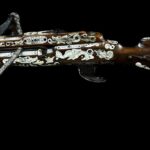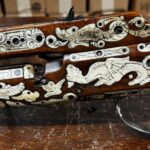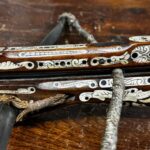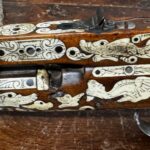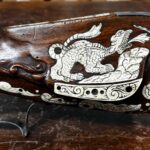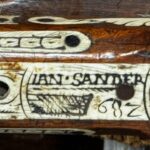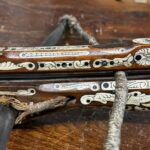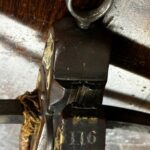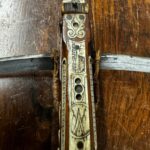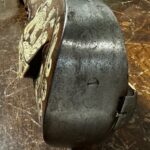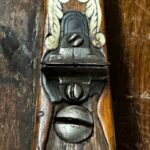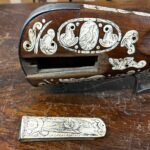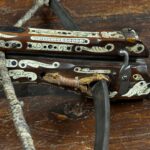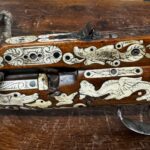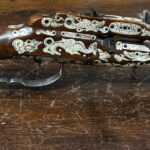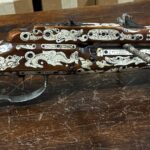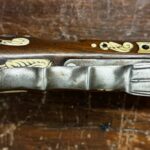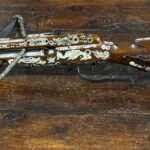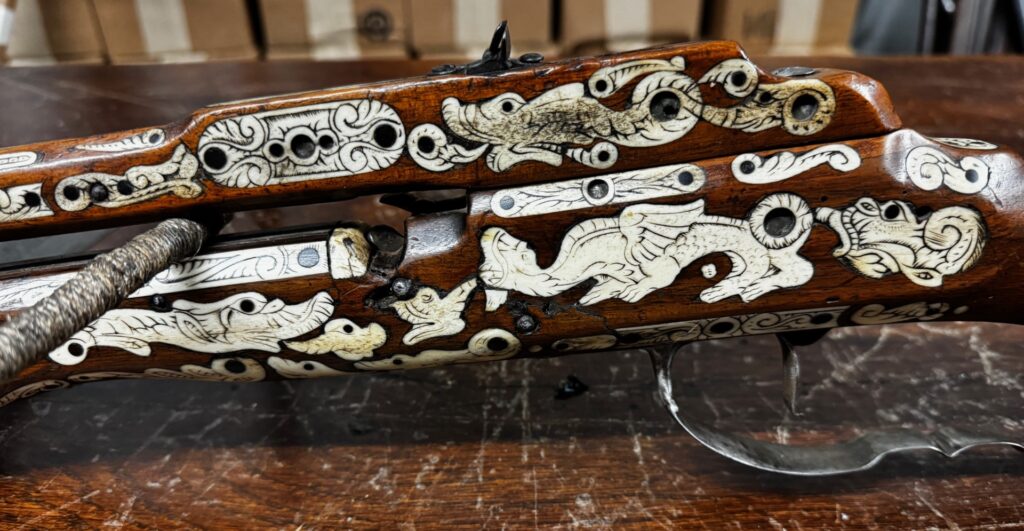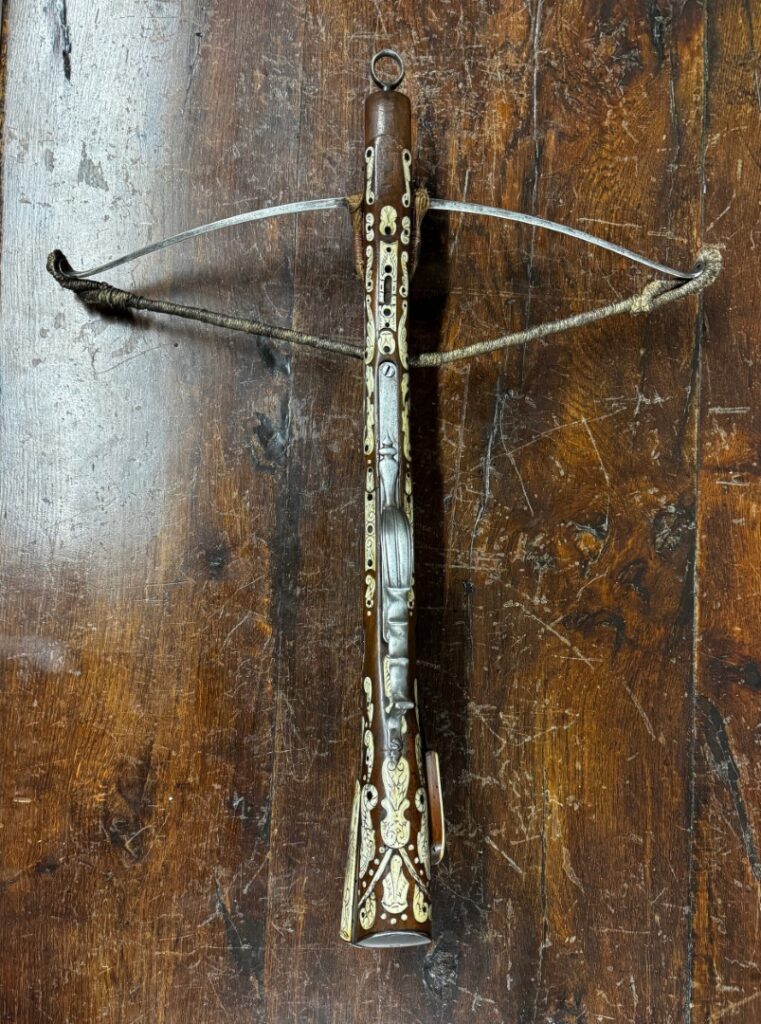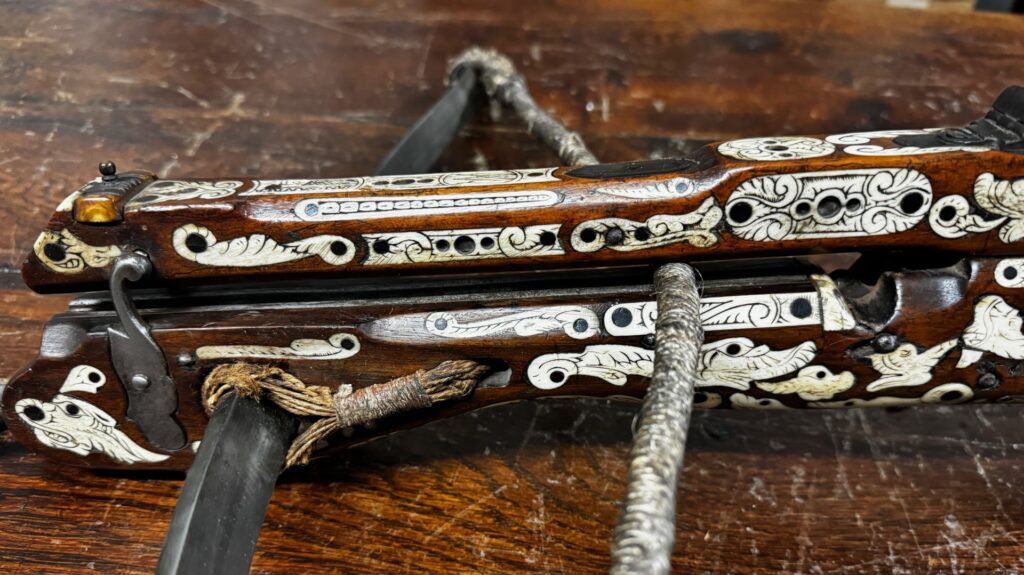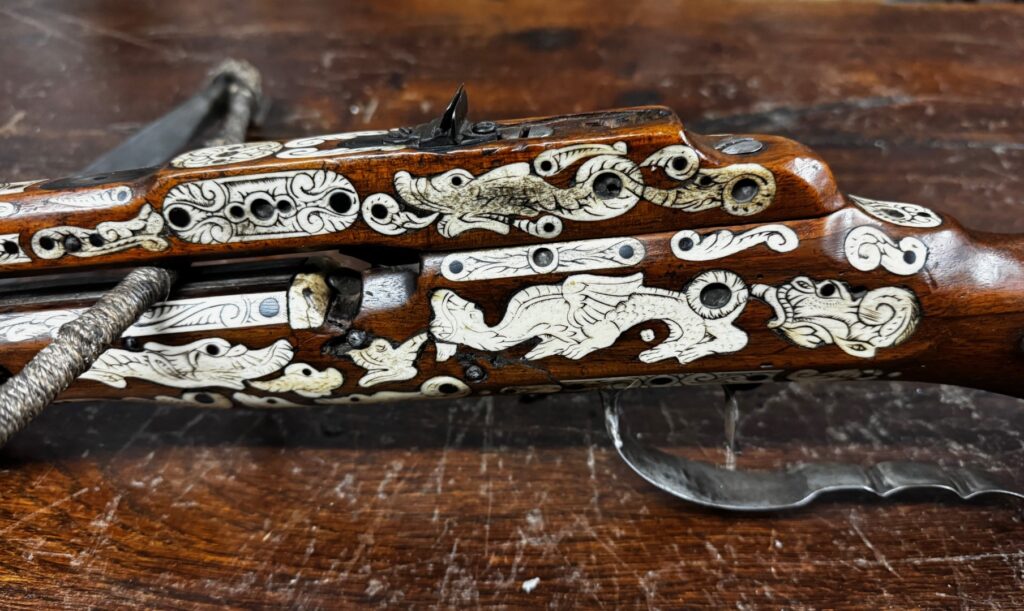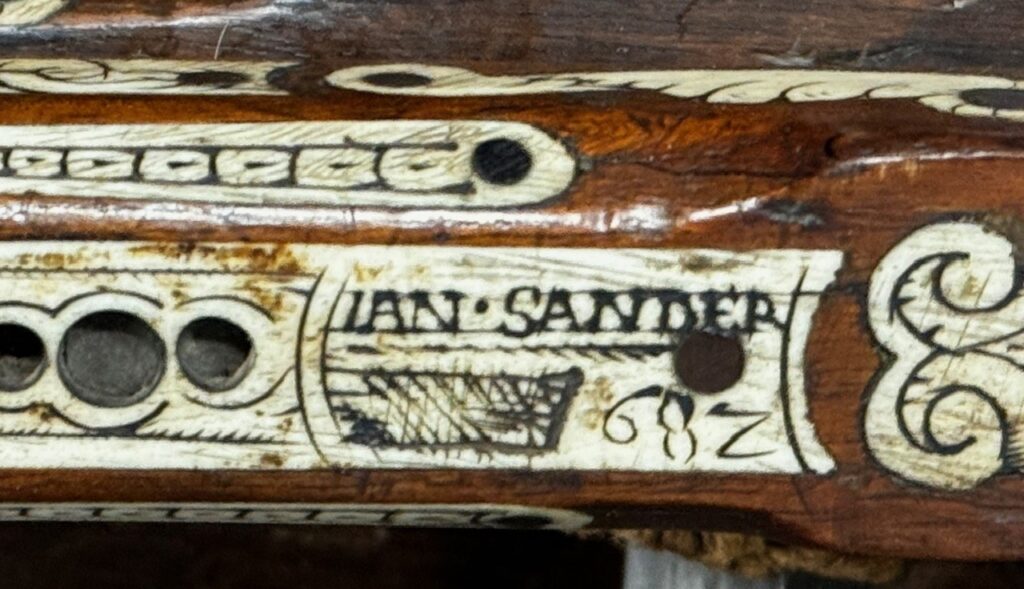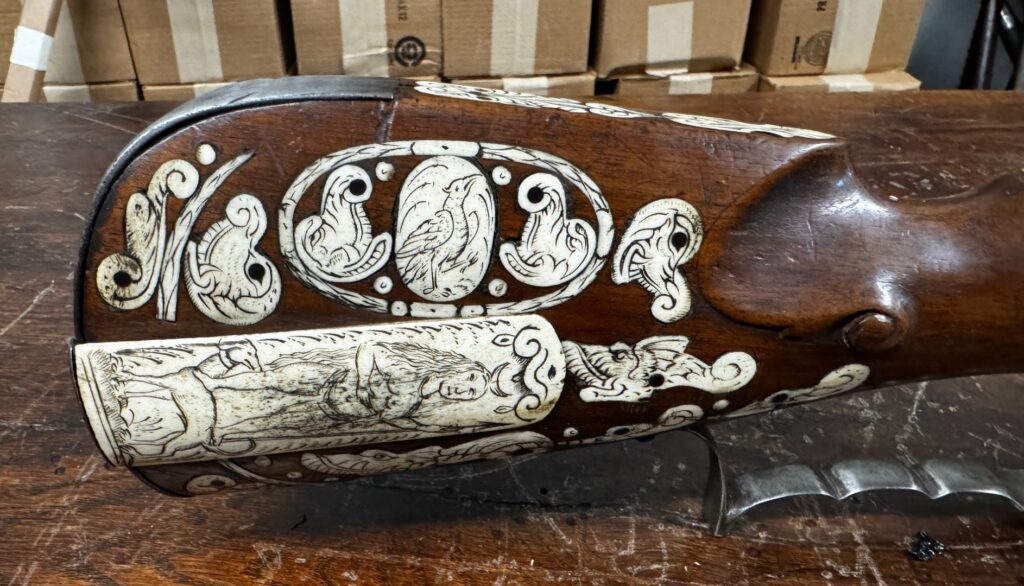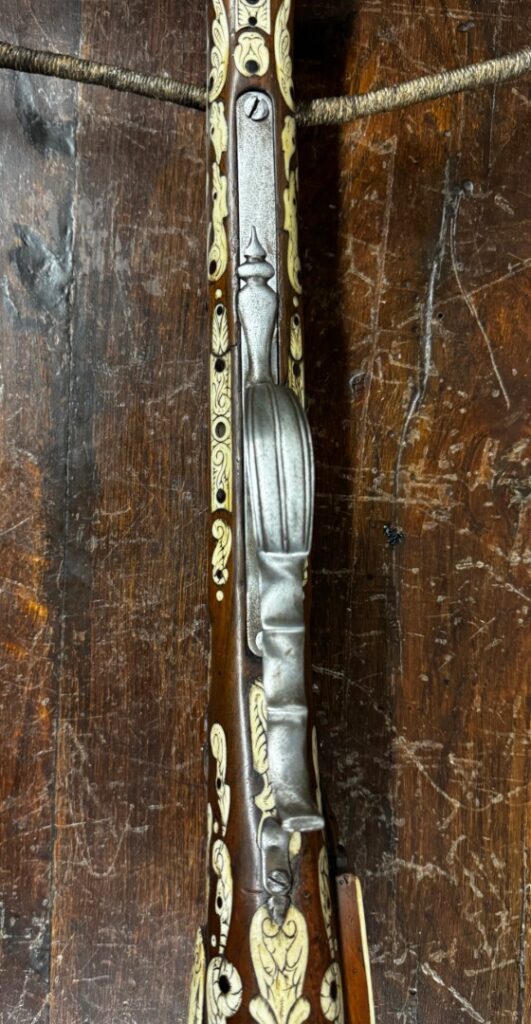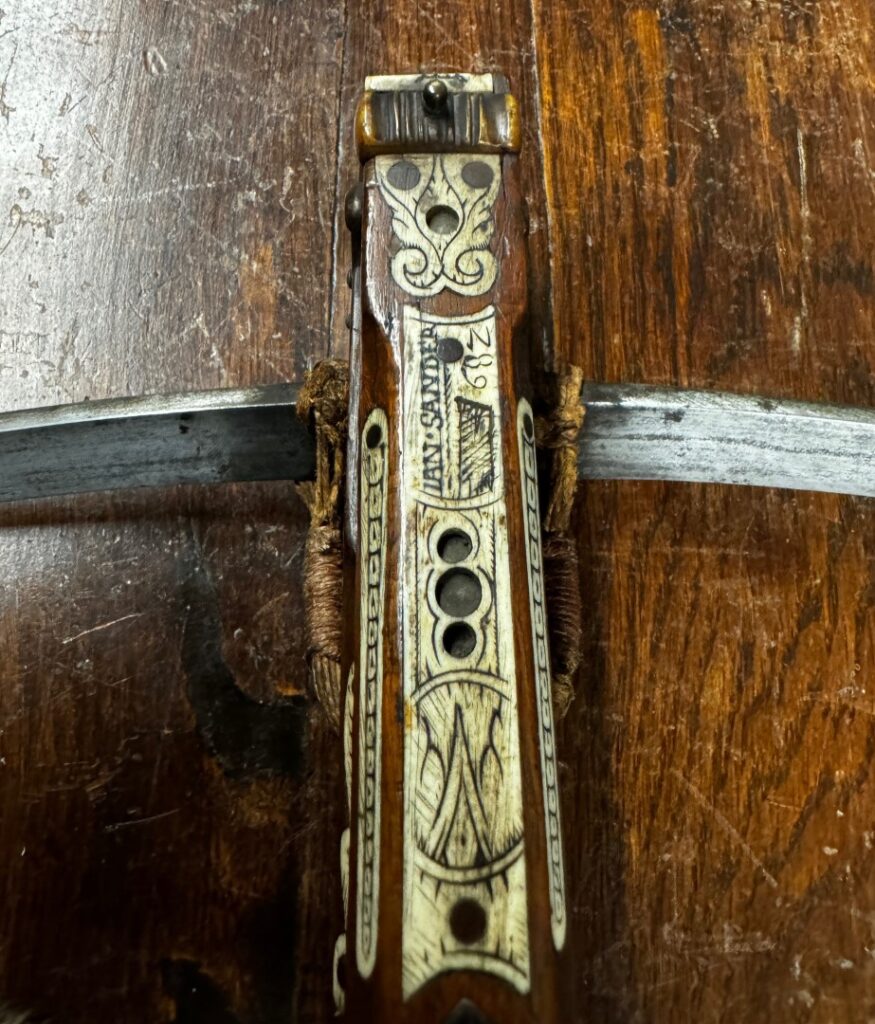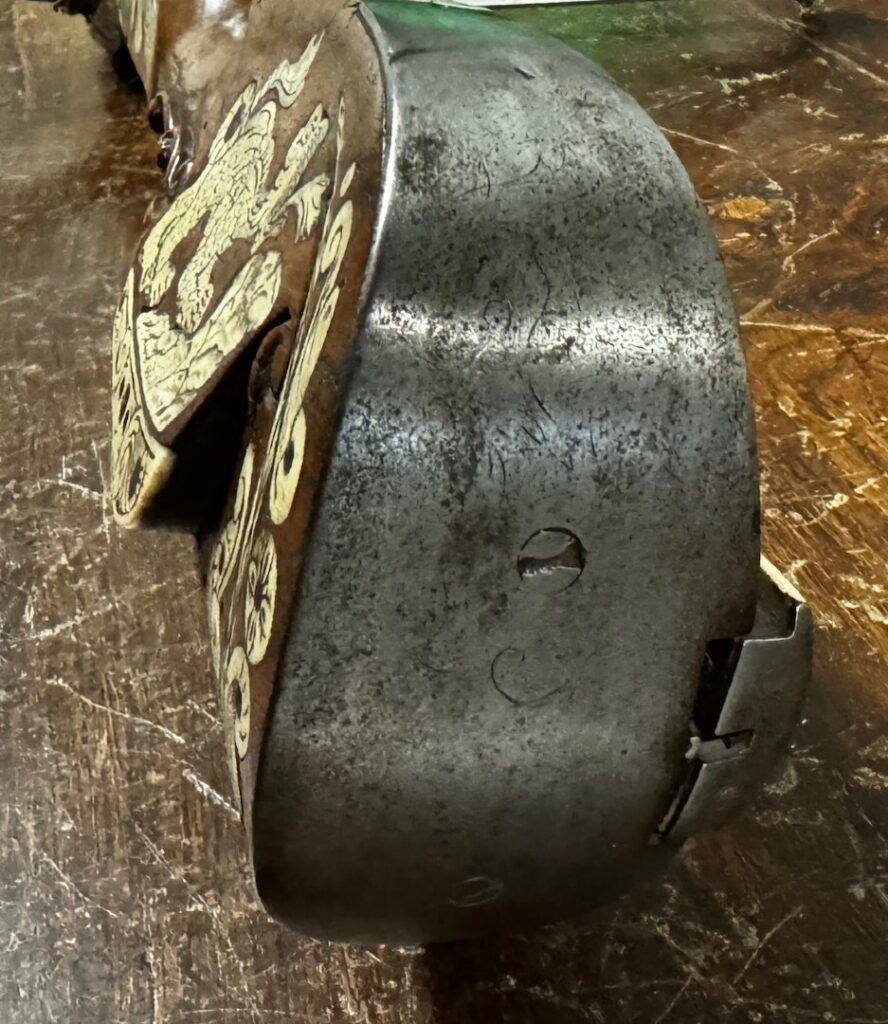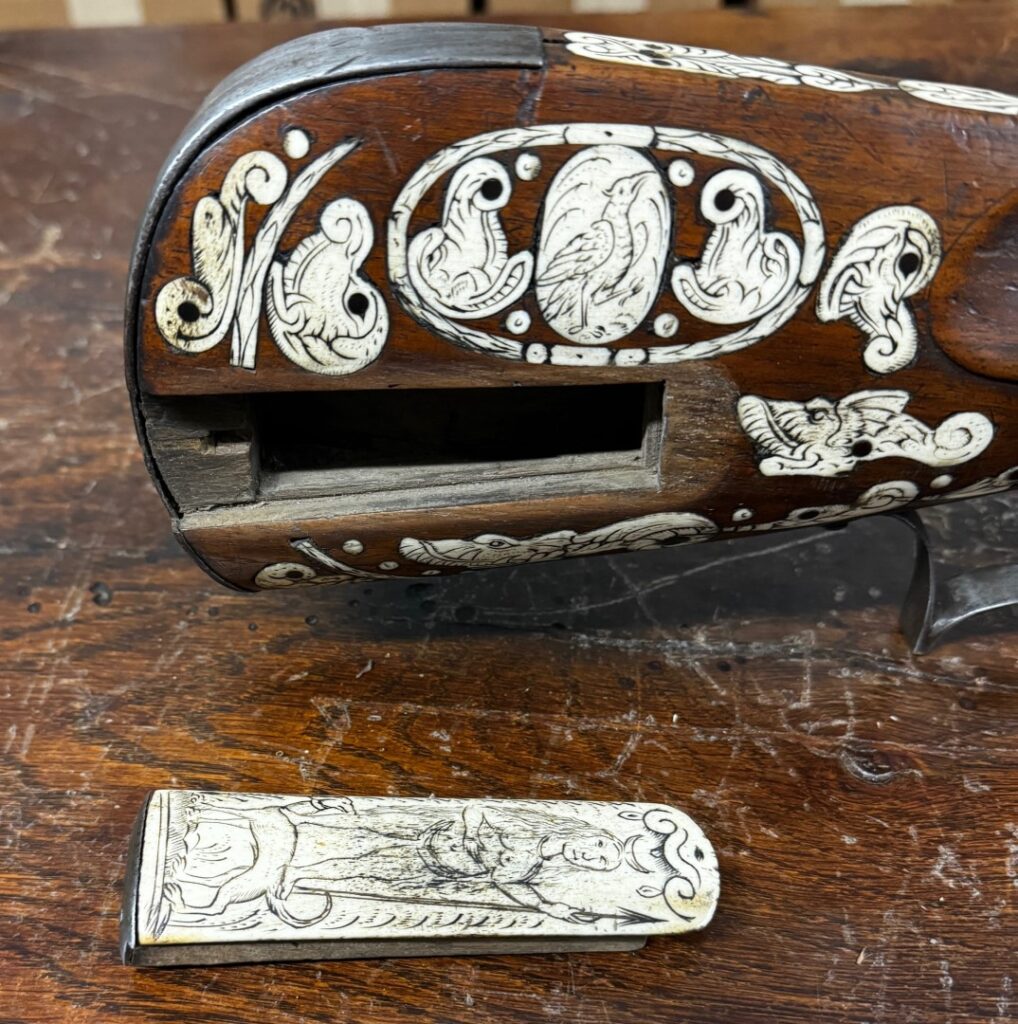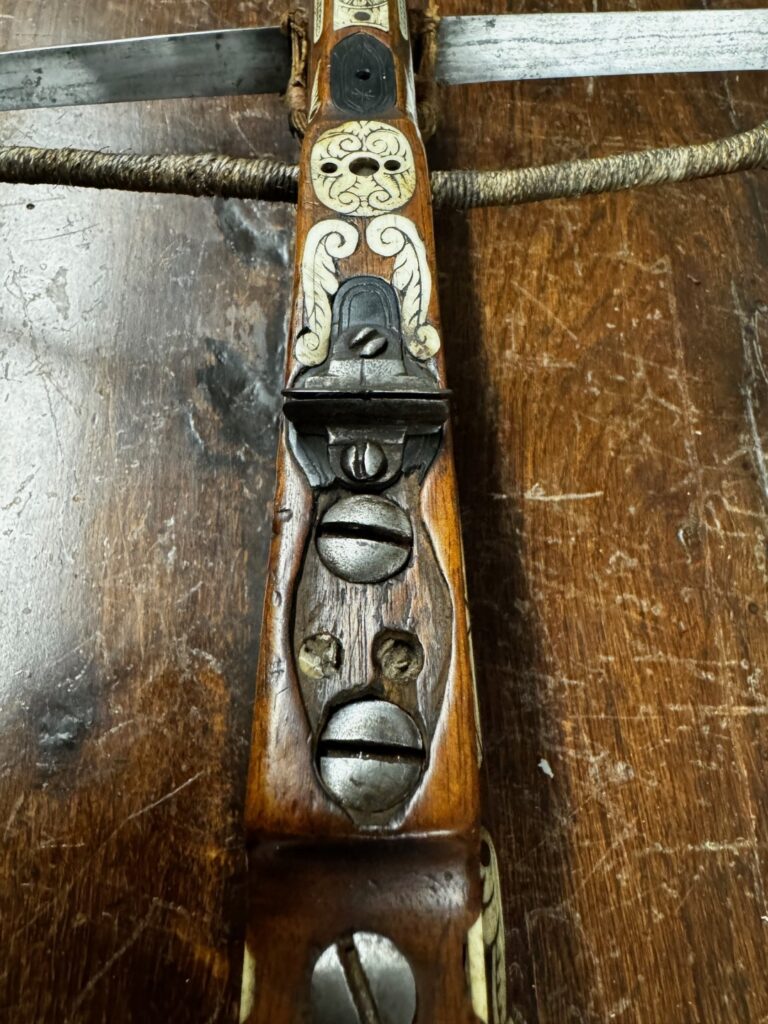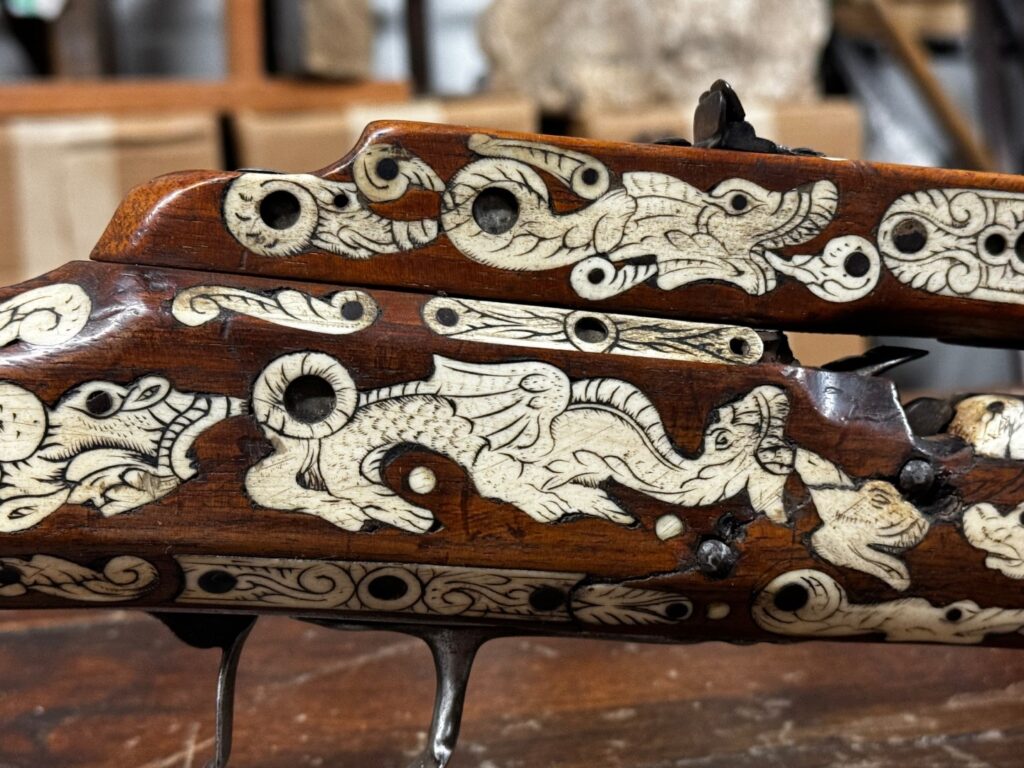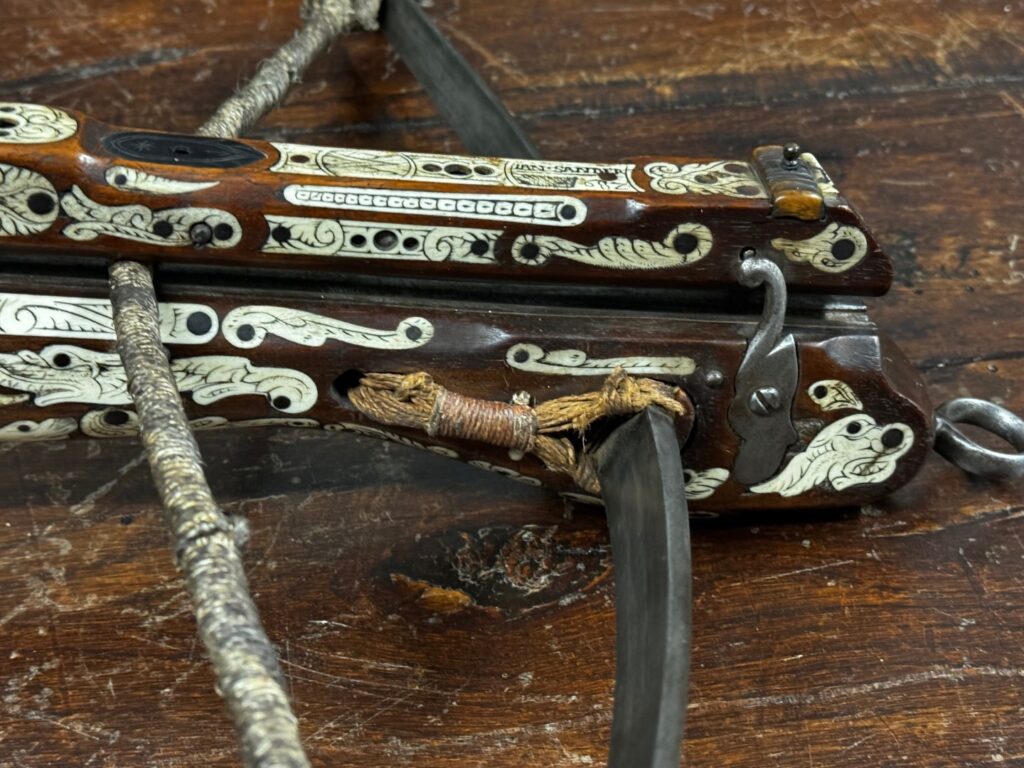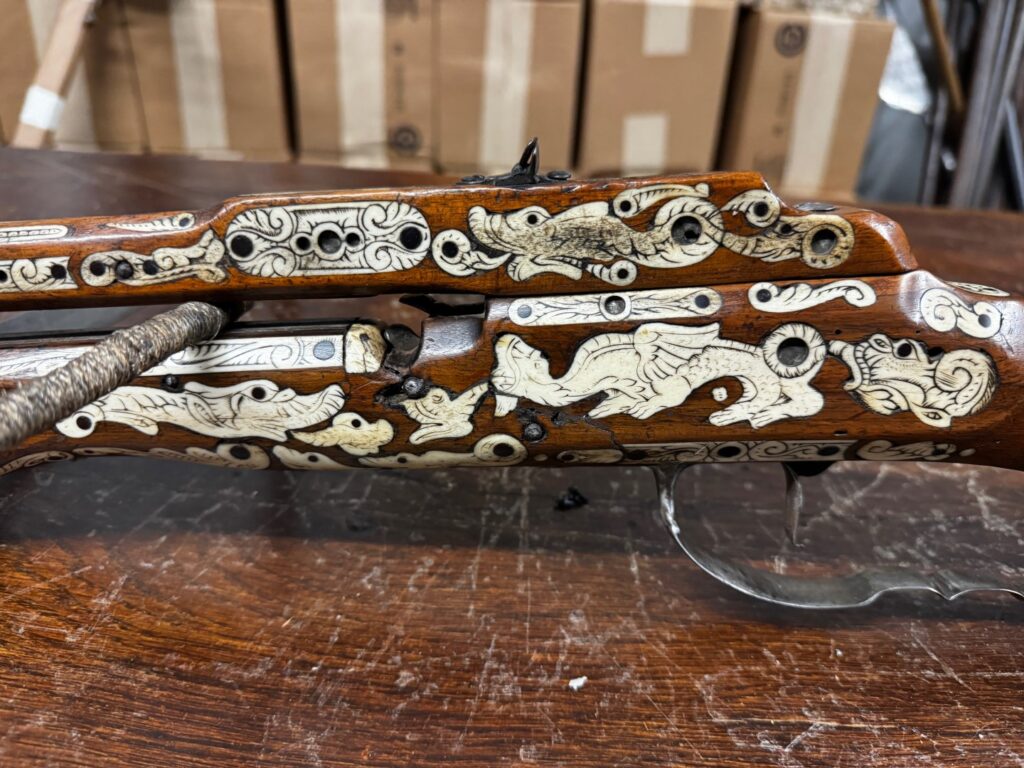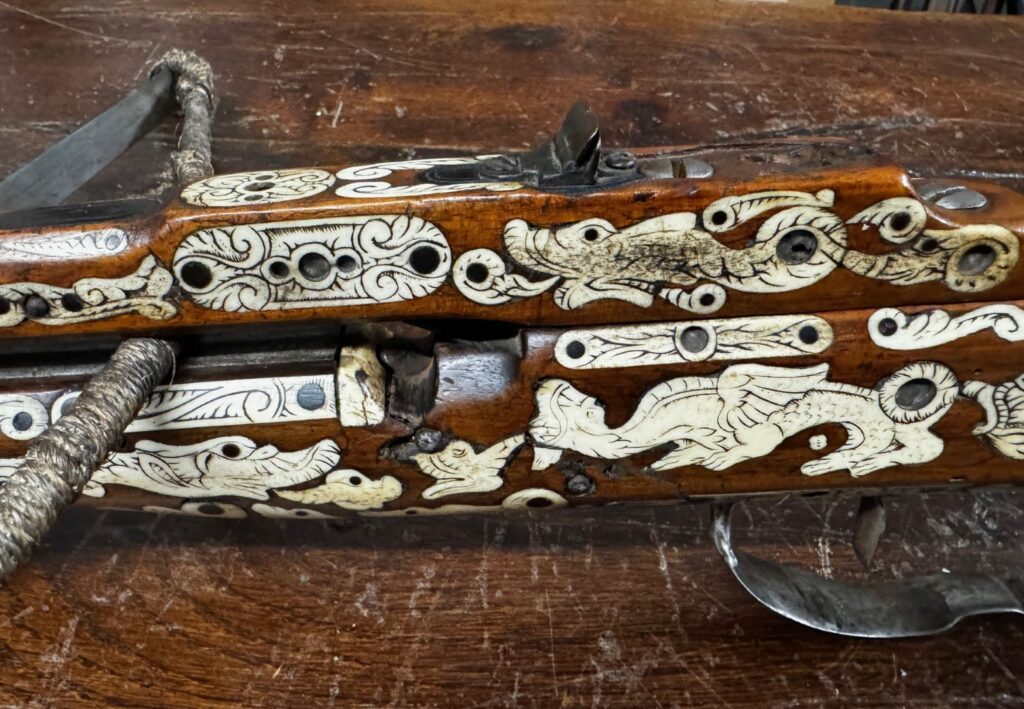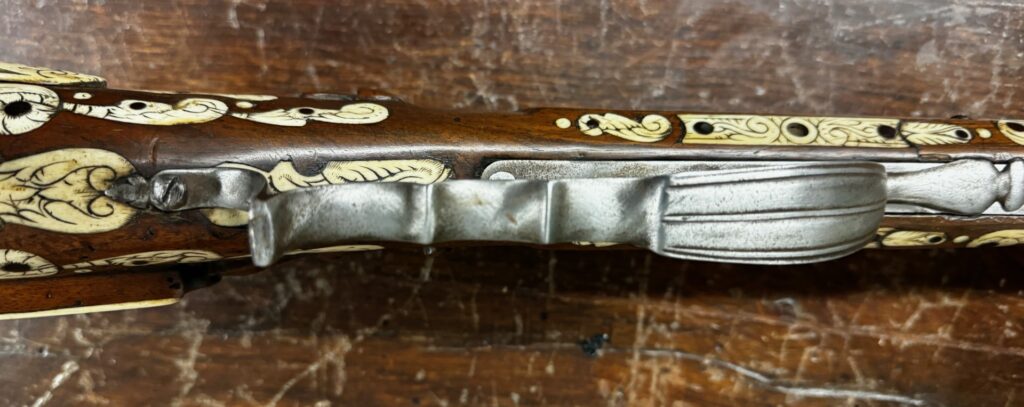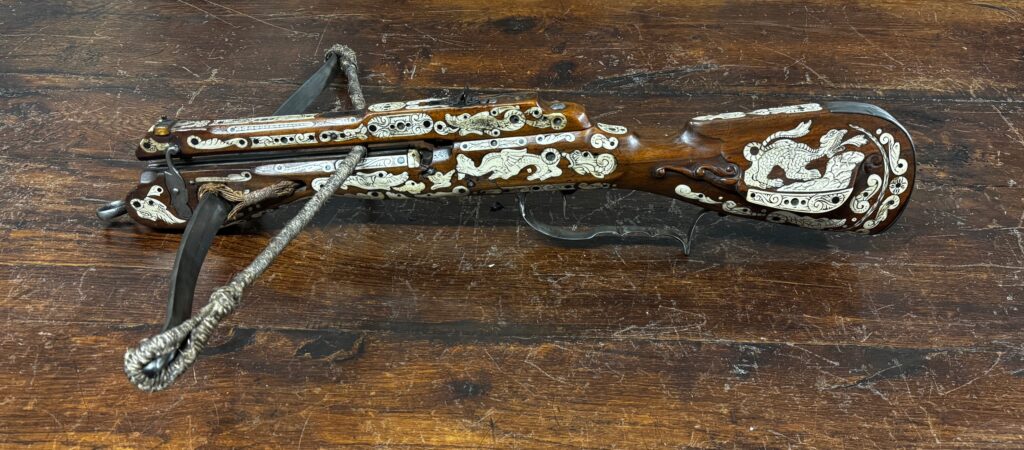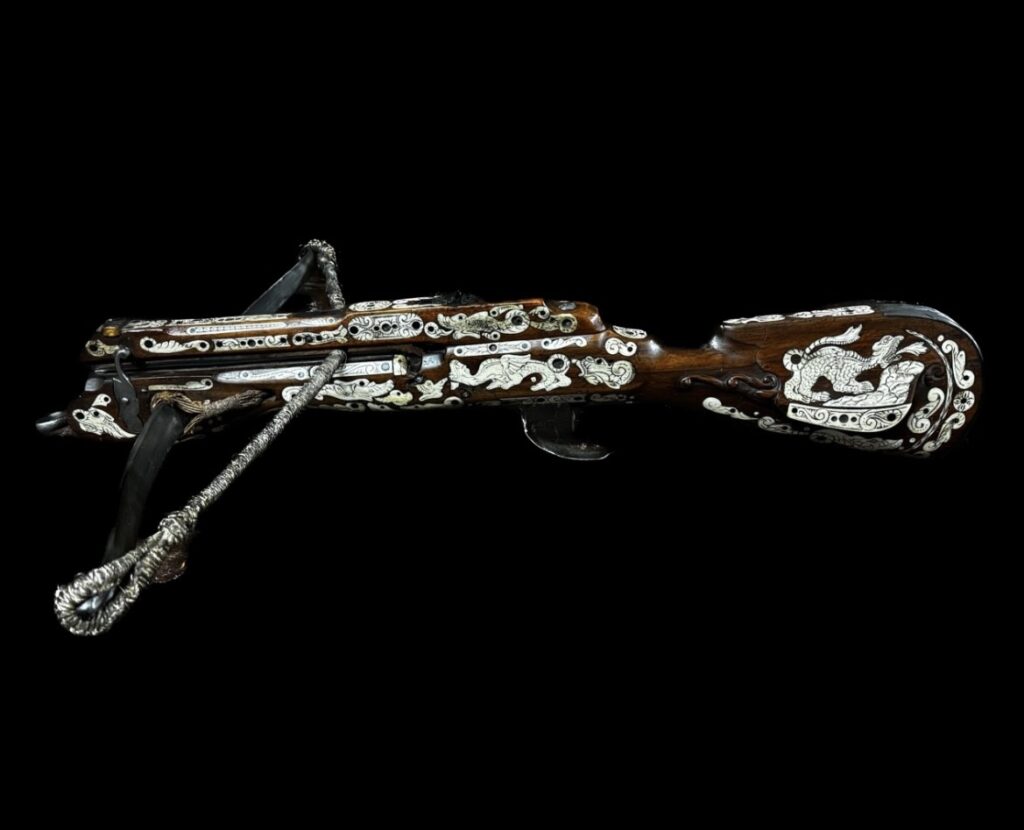1703) MUSEUM QUALITY HIGHLY DECORATED GERMAN CROSSBOW DATED 1682 BY JAN SANDER: It is the best-decorated crossbow I have had in 35 years!
Introduction: Dated 1682 and signed by Johann Sander of Hannover, Germany. Active 1670-1715. It was veneered to the maximum with deer bone and decorated with dragons, sea serpents, birds, monsters, and a hairy naked bosomed lady with a dog and spear on the patchbox. Beautiful metal work, which includes a metal plate for the butt.Superb condition- as original as the day it was made.
Discussion: In its original design as an offensive weapon, the crossbow presented a significant problem to the armored knight. A well-placed bolt shot by the most inexperienced crossbowman could penetrate armor. A lifetime of knightly training with the most expensive implements of war could be trumped in a few seconds by a peasant with a newly acquired crossbow. The crossbow‚ effectiveness did not go unnoticed. In 1139, the Second Lateran Council under Pope Innocent II (d.1143) issued a canon (decree) that stated that the Church had outlawed the use of the crossbow and longbow among Christians. It could only be used against non-Christians.
After the 1600s, the crossbow‘s silent discharge made it better for hunting than a firearm. The silence permitted hunting without scaring away animals, and the lack of a smell from flashing gunpowder meant the hunter’s position was not given away. Crossbows for the hunt were much more elaborate and expensive, such as this one under discussion. Later, crossbows were designed to fire bullets for the hunt.
Only the wealthy typically went on a hunt. Just as topics and negotiations are discussed on the golf course today, the hunt in the Medieval and Renaissance periods played the same role. It was also a time to show off ‚ wealth and socialize among the rich. The wealthy hunted bears, boar, and deer in what was called the “high hunts.” Lesser animals, such as birds and rabbits, were hunted by the poor. The hunt for the wealthy and noble was an elaborate affair planned with military precision and included many servants. Among the multitude of servants were beaters who made noise using implements to scare animals toward the hunters. The hunters would be camouflaged in natural terrain, camouflaged carts, artificial hedges, atop trees, or any combination as the animals were driven to them. Hunting was also done on horseback.
Contact Me To Get The Latest Lowest Price Possible From The Owner*

